Upon your arrival to Baltra Airport you will betransferred to the first visitor site, Charles Darwin Research Station, place that provides the opportunity to find out about the vital work that is being done to preserve the archipelagos ecosystems. There is also a significant breeding programfor Galapagos tortoises, to preserve the. After this activity head back to the yacht for dinner and rest.
Full itinerary map here: http://bit.ly/elite-12-days-da
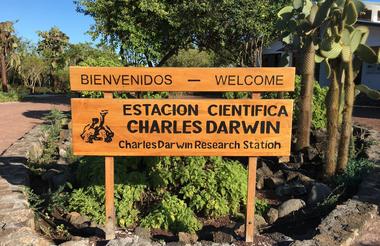
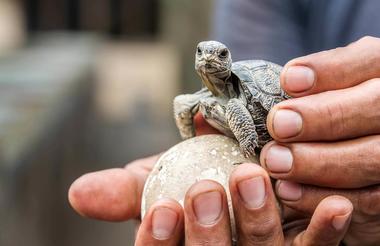
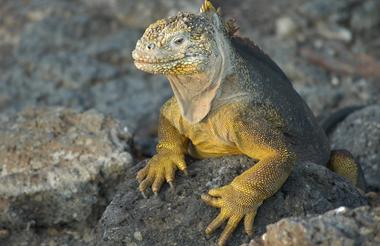
First activity of the day will be heading to Genovesa Island, specifically Prince Philip’s Steps also known as El Barranco, a rockystairway that leads past a colony of Nazca and red-footed boobies and up to a plateau of dried lava. You continue through a Palo Santo Forest, and often spot storm petrels too. A panga ride or kayaking along the edge of the cliffs of this place provides a chance to see the Galapagos fur seals nestled on the rocks. In the afternoon you will visit Darwin Bay, that has a small sand and coral beach, thatprovides a perfect spot for snorkeling, kayaking or paddle boarding. You can also spot hammerhead sharks, rays and a plethora of colorful reef fish. You can also visit a tidal lagoon and mangroves and see Nazca and red footed boobies and swallow tailed gulls.



Early in the morning you will head to Espumilla Beach at Santiago Island, an exquisite white sand beach, whose name refers to meringue-like trails of foam. You can fight sally light foot crabs, hawks, herons and pelicans. This place is also perfect for snorkeling, kayaking or paddle boarding. Then you will visit Buccaneer Cove, which was a place used by sailors,buccaneers and whalers to anchor their vessels in search for food and water.This is now a nesting site for turtles, and also a place where sea lions swim by. In the afternoon you will visit Egas port, once a salt mine, now is an impressive black sand beach, which provides an excellent location for snorkeling andobserving shorebirds.
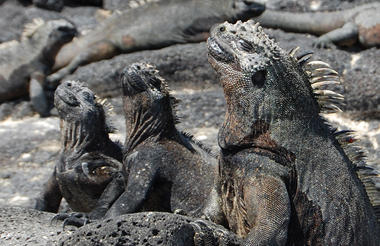
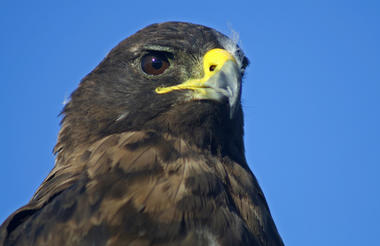
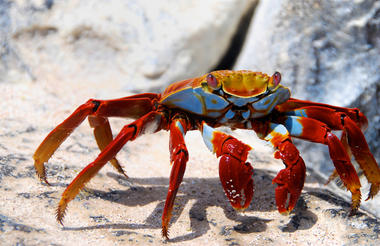
After breakfast you will visit Bachas beach, a nice white sand beach, where the remnants of a rusted barge, thought to have beenabandoned by the Americans during WWII can be seen. This is also a popularnesting site for turtles, and you can also practice snorkel here. In the afternoon youwill disembark at Santa Cruz Island and visit the Highlands of Santa Cruz, and the abundance of scalesia trees, along with bird species as vermilion flycatchers,Darwin’s finches and short ear owl with a bit of luck. Then you will visit twin craters,two almost identical crater like holes, caused by the collapse of empty lava chambers.After this activity return to the yacht for dinner and res

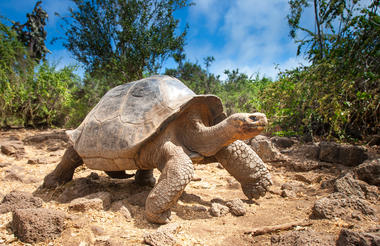

Accessed by panga, Lobos Island gets its name from the herds of sea lions that have made their home here. Snorkeling in the calm clear water provides a unique opportunity to see these inquisitive and playful animals up close and it is also common to be accompanied by green turtles and rays as well. Inland, there is a trail where you can expect to encounter nesting sites for blue-footed boobies and frigates. Activities and Excursiing and diving. It is common to spot eagle rays, sea turtles, marine iguanas and even hammerhead sharks.
After this visit you will land at San Cristobal Island to visit El Junco Lagoonan impressive crater lake located in the highlands of San Cristobal Island, where you will enjoy superb panoramic views of the island, and also spot frigate birds diving in the clear crystal water at the lagoon. After this activity you will be transferred to the yacht for dinner and rest.

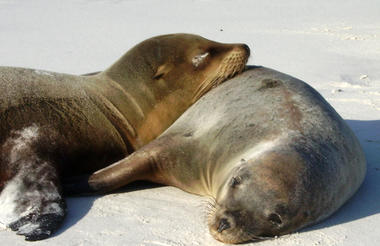

First activity of the day will be heading to North Seymour, a small island, and characteristic for its large population of blue footed boobies and swallow tailed gulls, along with frigate birds. If you are lucky enough you may spot the marvelous bright chests of male bird frigates when they court the females. In the afternoon, you will visit Dragon Hill at Santa Cruz Island, place named after the large population of land iguanas that live here, and that resemble miniature dragons, hence the name of this place. You will spot this species and also visit the Palo Santo forest here. This is also a nice place to snorkel



Early in the morning you will take a panga ride to Tintoreras, a chain of Islets near Isabela Island, that have created a unique habitat for a variety of wildlife. You can snorkel, kayak, or paddle board at this spot. Then you will visit Sierra Negra Volcano at Isabela Island, one of the most active in the Galapagos. As you walk to the top of the caldera you will spot forest of guava trees, and if the weather allows it you will have a spectacular view of the entire island. After lunch you will head to Arnaldo Tupiza Breeding Center, where you will learn about the conservation efforts that have been made to preserve the two species of Galapagos giant tortoises that inhabit here. Then you will be transferred to Isabela wetlands, a spot comprised of lagoons, swamps and mangroves, which have become a paradise for migratory birds like stilts and flamingos.



After breakfast, you will take a panga ride to Moreno Point, located on the west coast of Isabela, while spotting sea turtles and white-tip sharks. Once you land you will take a trail to a place with a multitude of green lagoons and mangroves. You may also spot penguins, blue herons and flamingos here. In the afternoon you will visit Urbina Bay, located at the foot of Alcedo Volcano, and result of a major volcanic uplift, resulting in a coral reef being lifted out of the ocean. You can observe corals and remains of marine life that were stranded due to this event. This place is also home to giant land iguanas and giant tortoises, Galapagos hawks and flightless cormorants. You can also snorkel at this spot.



First activity in the morning will be heading to Espinosa Point at Fernandina Island, by a zodiac ride. You will be able to spot marine iguanas, sally light foot crabs, and once on land, you will explore the mangrove plants, lava cacti and the lave formations that can be found here. In the afternoon you will visit Vicente Roca Point by a panga ride. This is a beautiful large bay with two coves that provide nesting sites for blue-footed and Nazca boobies, gulls storm petrels and Brown Noddy Terns. You can also snorkel here, while spotting a great abundance of marine life, like sea lions and dolphins.



Rabida and Bartolome Island: Early in the morning, after breakfast, you will take a panga ride to Rabida Island, most known for its dark red sand beach surrounded by a backdrop of cliffs and steep volcanic hills, full of Palo Santo trees and endemic cacti. You can also spot blue-footed and Nazca boobies, and a large sea lion colony at the shore. This is also the only site where all nine Darwin’s finches are found. You can also snorkel, kayak or paddle board at this spot. In the afternoon, head to Bartolome Island, an islet located in Sullivan Bay, famous for the huge volcanic cone named Pinnacle Rock. A walking trail leads to a viewpoint at the summit of the island where you can enjoy spectacular views of Pinnacle rock and the entire island. The northern beach of this place is perfect for snorkeling and spotting eagle rays and reef sharks.

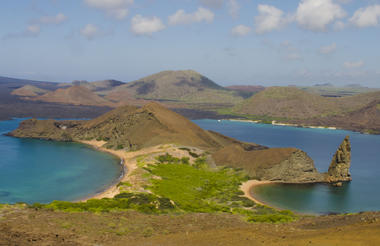

Kicker Rock, San Cristobal
They say your culture influences the way you look at things, and Kicker Rock may just be the proof of that. Kicker Rock is a distinctive, boot-shaped rock formation located off of San Cristobal Island. In English, it gets its name from this shape. In Spanish, its name is “León Dormido,” or “Sleeping Lion.” Does it look more like a boot or a lion? You’ll get a nice close-up chance to look for yourself and make up your mind. The M/C Elite sails around it, giving you the opportunity to take incredible photographs and see several kinds of seabirds on the rock itself. If you’re lucky, you might get to see rays and sharks swimming just under the surface!
Witch Hill, San Cristobal
Witch Hill gets its name from the Vermilion Flycatcher, a small bird with dazzling red plumage. In Spanish, it is called “pájaro brujo,” or “witch bird,” and the rugged hill at this site was once known for the population of Vermilion Flycatchers that lived there. The birds are not as common here as they once were, although they are still plentiful elsewhere in the islands.
The Witch Hill visitor site features one of the best beaches in Galapagos, a small lagoon where visitors may see egrets and herons, and some excellent light snorkeling. Generally, part of the visit includes a panga ride around the unique rock formations of Witch Hill itself.
Sea lions snooze on the beach, and nesting boobies quork and whistle at visitors from the rocks.
The waters here are particularly lively: look for shore birds darting along the water line and poking around in tidal pools, boobies fishing offshore and pelicans splashing noisily in search of a billful of fresh fish. There is a spectacular view of picturesque Kicker Rock from the beach.
Giant Tortoise Reserve on San Cristobal
A hike into the wilds of the Galapagos is an adventure all to itself! Visiting the Giant Tortoise Reserve, the longest hike on San Cristobal at about 5 km each way, will give visitors the opportunity to observe this iconic Galapagos species in its natural habitat.
There are approximately 6,000 giant tortoises on San Cristobal Island, and on most days hundreds of them can be seen on the hike, in addition to several other endemic species, including furtive lava lizards and friendly mockingbirds.
The beach located at the visitor point is a great place to go snorkeling. Many different fascinating species can be seen underwater, including several species of colorful fish, enormous sea turtles and even white-tipped reef sharks! The beach is also a nesting area for sea turtles, and at certain times of the year visitors might be able to see some hatchlings.

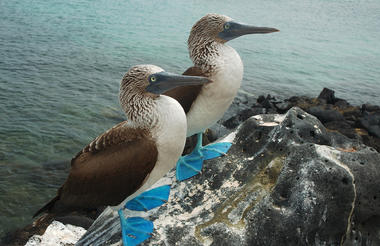

Breakfast
Lunch
Dinner
After breakfast, you will disembark at San Cristobal Island, to visit the Interpretation Center, that provides an overview of the fascinating history of the islands, and learn about the natural history, human history and the conservation for the future. After this activity, you will be transferred to the airport to take your flight back to the continent.
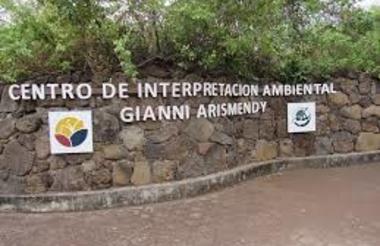
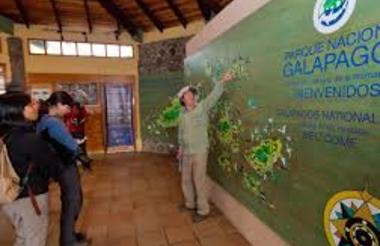

Breakfast








